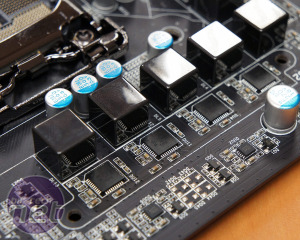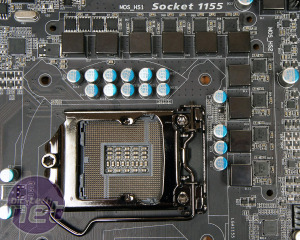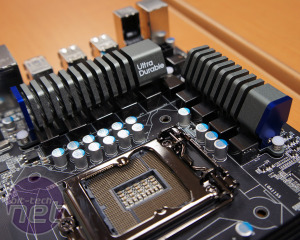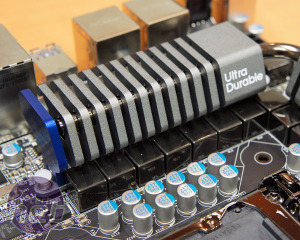Onto the hardware
Gigabyte - a company who recently over-engineered a motherboard with CPU power hardware capable of handling 1,500W - has changed its CPU power hardware to smaller Driver MOS (branded DrMOS by MSI) MOSFETs.Gigabyte has previously used these small MOSFETs on a few Intel P55 high-end boards, so it has some experience with them. However, it's still following in the footsteps of MSI and EVGA on this front.
Driver MOS(FETs) uses a smaller footprint for the same or better power provision (we're not precisely sure of the exact spec yet), which we expect will become more apparently as Gigabyte packs them in on higher-end models. At the moment, the UD3R has 8+2-phase power, while the UD4 has 12+2-phase. Those additional phases (the '+2' or '+4') use the older style MOSFET, as do the rest of the board - including the memory and P67 chipset. Both boards also feature Dual-Power technology, with a 'DP-switch' and multi-gear power saving.
The Gigabyte product manager we spoke to claimed the extra phases would be noticeable in keeping the board cooler, by distributing the load better, and will help when overclocking K-series Sandy Bridge CPUs. On that note, the cooling hardware is similar, although the UD4 gets an additional heatpipe between the two MOSFET heatsinks. Since seeing the boards in the flesh, we're growing to like the new chunkier design.

MSI MPG Velox 100R Chassis Review
October 14 2021 | 15:04













Want to comment? Please log in.